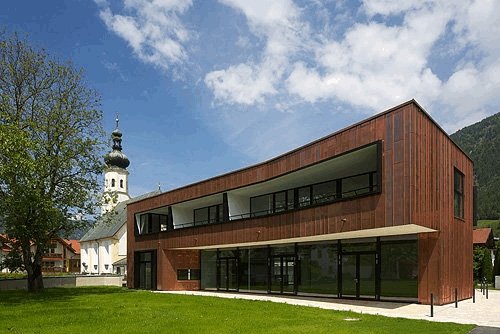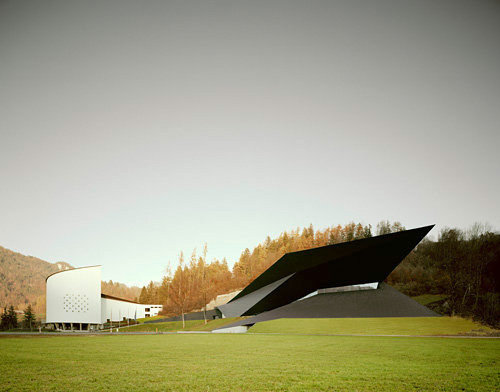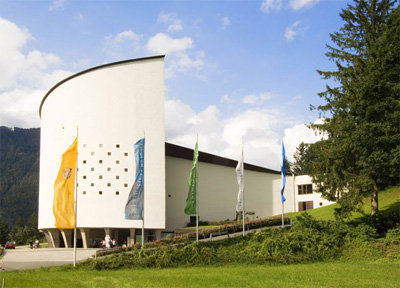Parish Rectory, Erl
Architecture: umfeld architectural environments (2013) Builder-owner: Pfarre Erl
In the rural village center of Erl, the church, cemetery and parish garden form a clearly enclosed unit marked off from the surrounding development. As a secular antipode to the church, a new parish rectory was placed in the garden. Its location and polygonal ground plan layout were derived from the existing structure. Analogous to the roof of the church, the structure was enveloped with a copper façade, which will take on a characteristic blue-green patina over the years.




